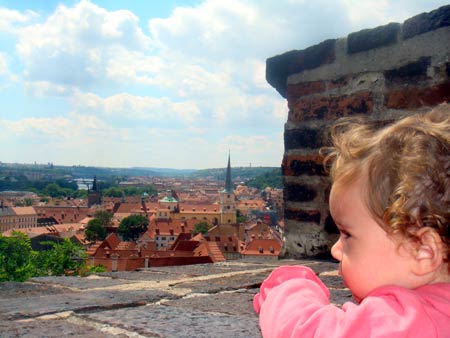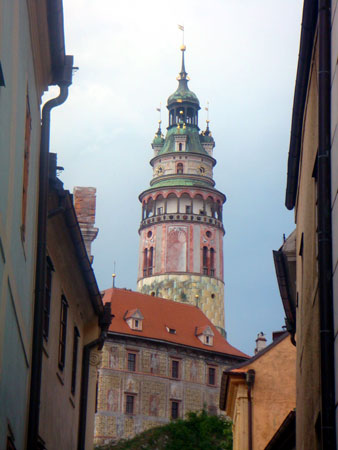Walking Prague

Prague, the invincible city. We set off to explore it knowing only that to understand its past would require time incommensurate with the amount of time we'd be there. And so it was, the three of us wandering the cobbled streets through Hussite, Baroque, Renaissance, Communist, and Art Nouveau influences, trying to piece it all together. We rode street cars and underground metros, walked the Hradçany and the Malá Strana, and retired evenings to a lovely hotel on a wooded street behind the magnificent Náměstí Míru church.
The Czechs are without a doubt the most friendly and welcoming people I've met in the past decades. We found them sharply dressed, good natured, and kindhearted. We never set foot in a street car without some person leaping immediately to his or her feet, offering a seat to the tourist family traveling with an 11-month old baby. We bought some baby clothes in a little shop not far from our hotel, from a woman who insisted on giving Valentina a gift as well; and even the ticket collector on the street car took the time to give us a smile and wish us well in his city. Lots of other cultures, including my own, could take lessons in hospitality from the Czechs. Continue reading "Walking Prague"

